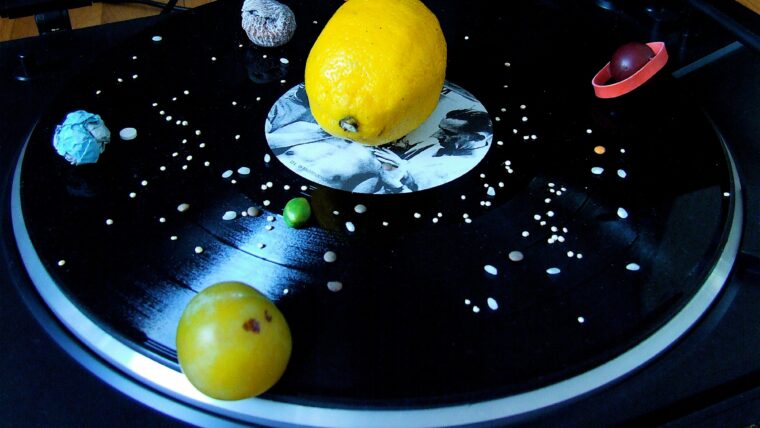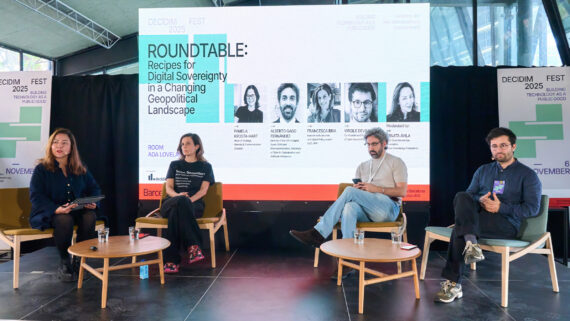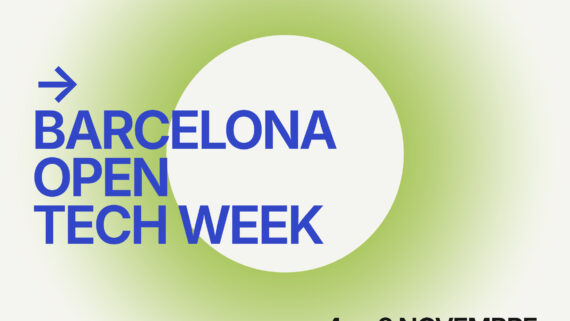
A stage performance, an interdisciplinary conversation, and an artistic installation bring science closer to the public with humor, critical thinking, and a democratic perspective.
What do quantum physics and artificial intelligence have to do with each other? How do these two worlds intersect and what does this encounter mean for the future of technology and society? The Canòdrom is hosting three activities as part of the 2025 City and Science Biennial to answer these questions from an accessible, critical and close perspective.
The 2025 City and Science Biennial, taking place from 18 to 23 November in Barcelona and Madrid, dedicates this fourth edition to quantum revolutions. With more than 130 scheduled activities, the event aims to bring citizens closer to a discipline that has profoundly transformed the world since the early 20th century and that plays a strategic role for Barcelona, with reference centres such as the Barcelona Supercomputing Center, the ALBA Synchrotron or the Institute of Photonic Sciences.
Looking beyond the screen with the Generative AI Cartography
Until 27 November, the ground floor of the Canòdrom is hosting the Generative AI Cartography, an artistic installation by Taller Estampa that invites visitors to pause and look beyond the technological mirage of generative artificial intelligence.
Generative AI is in vogue, but… do we really understand what lies behind it? Where are the machines that run these systems? What resources do they consume? Who makes the decisions and who suffers the consequences? The installation focuses on everything that usually remains off-screen: the territories, infrastructures and material conditions that make it possible for us to generate texts or images in a matter of seconds. To delve into the exhibition, visitors can listen to a sound journey created by the authors of Taller Estampa and Ràdio Canòdrom, which guides a critical gaze through the different layers of the cartography.
A scenic journey through the quantum world via science fiction
On Wednesday 19 November, from 12 pm to 6 pm, the Ada Lovelace Hall will host the performance Ciència-ficció, by Cris Blanco. In the quantum world, all possible realities occur at once, but only one becomes real when someone observes it. Based on this idea, Blanco proposes a journey through science and technology news from the point of view of someone who is not a scientist, but who cannot stop wondering what on earth is happening.
With humour, wit and a surprising set design, the performance turns scientific knowledge into scenic material, mixing science and fiction to make accessible what often seems impossible to understand. Cris Blanco signs the direction, performance, music, set design and lighting, with the collaboration of Rubén Ramos on the music.
Current perspectives and alternatives in quantum science and AI
On Friday 21 November, from 6 pm to 8 pm, the conversation “Exploring quantum science to understand AI: current perspectives and alternatives” will take place. A three-way meeting between science, art and social critique to think about the connections and tensions between these two worlds.
Jordi Romero, physicist and science communicator, will reveal what quantum science really is and how it relates to artificial intelligence. Through the Generative AI Cartography by Taller Estampa, the discussion will reflect on the invisible, geopolitical, material and social impacts of generative AI. Marga Padilla, from the Dabne cooperative, will invite imagining other possible paths for a critical digitalisation aligned with ecosocial justice.
A session to collectively think about the future of technology from a critical and present perspective, faithful to the Canòdrom’s vocation to promote technological sovereignty and democratic innovation.






